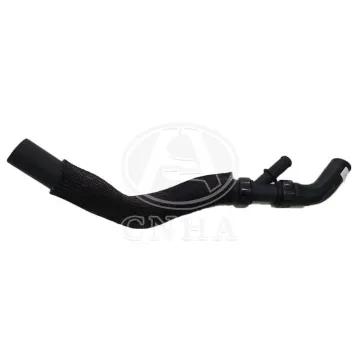What Is Rubber Hose?
Mar. 26, 2021
A rubber hose is a kind of hollow tube which is designed to carry fluids from one location to another. The shape of a hose is cylindrical. They are used in water or other liquid environments to carry air or other gases or they are used in air or other gaseous environments to carry liquids. A hose is used for wide variety of industrial purposes. The hoses are manufactured via extrusion process. In general, hoses are used to carry fluids through fluid environments. This function of the hose sets the key requirements for the rubber in hoses. Rubber hose manufacturers say silicone hoses are very popular.
Properties of Rubber Hoses
The requirements for rubber in hoses are diverse, depending on the hose type, the product carried and requirements for filler layers and covers. Any hose can have more than one rubber compound type depending on its construction, specially formulated to give the required properties for the layer. One essential factor in rubber hose is to achieve very high levels of adhesion to ensure maximum resistance to fatigue. The key properties for the hose are oil or fluid resistance, high resistance to aromatics, temperature resistance, fatigue resistance and ozone resistance.
Types of Rubber Hoses in Industrial Applications
Automotive hoses
Auto rubber hoses are used in automobiles to move fluids around for use in lubrication or cooling and in hydraulics. The Hongan 3C3Z8075AE Ford Heater Hose is made for general service on light trucks and passenger cars. Constructed using all EPDM compounds and spiral reinforcement for high burst strength and excellent heat resistance of -40˚F (-40˚C) to +248˚F (+120˚C), this hose is similar to SAE 20R3 and is specifically designed to be compatible with all common coolants and coolant additives.
Fuel Hose
Fuel hoses are required to have extremely low permeability to fuel in order to regulate and lower hydrocarbon emissions. Mixed fuels like ethanol, methanol etc. require hoses with high resistance to polar solvents. Adding carbon blacks to rubber hoses reduces both permeability of gasoline and swelling of solvents.
Radiator Hose
Radiator hoses are resistant to coolants at elevated temperatures.
Industrial Hose
There are various types of applications of industrial hoses, including water and steam hoses, air hoses, oil and petroleum hoses, refrigerant hoses, and chemical hoses. Here also, strength and resistance to solvents and chemicals are key requirements.
Ford Heater Hose
Fire Hose
Fire hoses are one of the most recognized hose pipe in industrial usage as they are largely applied in Fire stations and Fire Brigades. The inside of the hose is composed with water resistant rubber compound suitable for the intended use. The cover is also made from rubber which gives outstanding resistance to heat and abrasion.
Garden Hose
This is used to water plants in a garden or lawn or to carry water to a sprinkler for the same purpose.
Air hoses
These hoses are used in underwater diving to carry air from the surface or from air tanks.
Buying Tips for Rubber Hoses
To buy hoses, consider the following:
Design
Design units: Design units can be English measurements like in inches or fractions of an inch, or metric measurements like in millimeters or centimeters.
Inside diameter: The inside of the hose is the inside diameter.
Outside diameter: The outside diameter is the normal specification for hoses of corrugated or pleated construction.
Performance specifications
Working pressure: This is the maximum service design pressure.
Maximum vacuum: This is given in inches or mm of mercury referenced below one standard atmosphere.
Minimum bend radius: This depends on a combination of acceptable hose cross-section deformation and mechanical bending limit of any reinforcement.
Temperature range: This is the maximum required range of ambient operating temperature.







